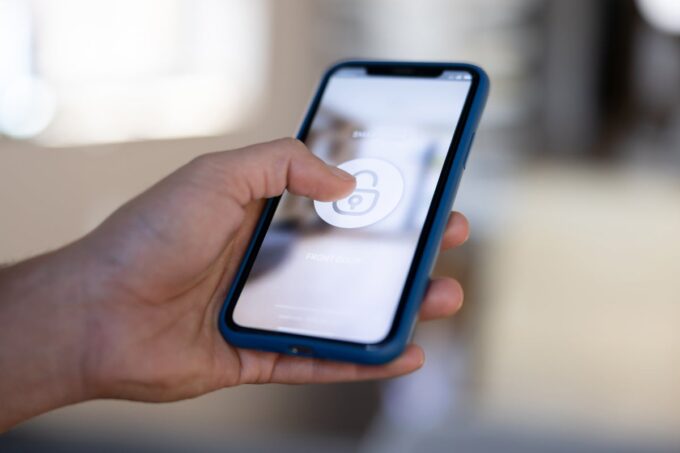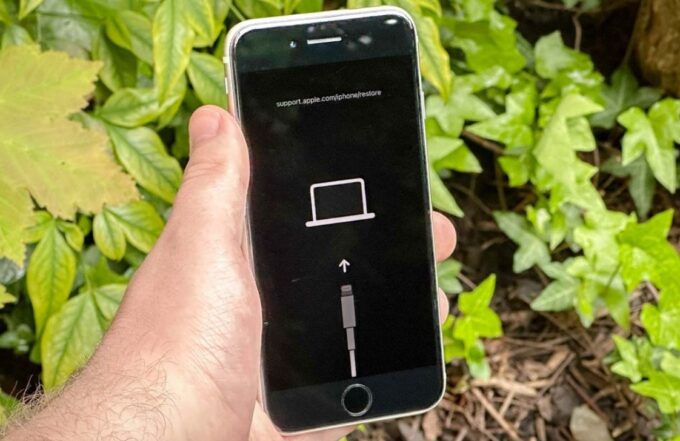In an age where our smartphones are akin to lifelines, a staggering 1 in 3 iPhone users have reported experiencing a ‘locked out’ situation due to forgotten passcodes at least once, according to industry surveys. This unexpected predicament underscores the necessity for reliable Apple iPhone Passcode support.
Understanding how to reset your iPhone passcode not only regains access to your device but also safeguards your personal information. Whether facing the dreaded “iPhone is disabled” message or simply planning ahead, knowing iPhone Passcode reset methods is essential.
For those seeking Apple iOS Passcode troubleshooting, there are tried-and-true solutions available. These include the Unlock iOS device Passcode process which offers peace of mind.
‘Support Apple com iPhone Passcode help’ provides comprehensive guides and resources for those moments when someone whispers desperately, “I forgot my iPhone passcode”. Reassurance is at hand with straightforward Resetting Passcode on iPhone instructions.
Being locked out of one’s iPhone is not only frustrating but can also disrupt daily routines, access to critical applications and secure data. Therefore, the ability to perform an iPhone Passcode Forgot assistance procedure is invaluable. Without further delay, let’s delve into the methods that will restore access to your device without compromising security.
Key Takeaways
- One in three iPhone users have faced a passcode lockout, highlighting the importance of knowing how to unlock their device.
- iPhone Passcode reset methods provide a secure way to regain access and protect personal information.
- Apple offers detailed support and several options for users needing to troubleshoot the passcode issue.
- Knowing the process to Unlock iOS device Passcode can significantly minimize disruptions caused by a locked iPhone.
- With the right resources and steps, even those who have forgotten their passcode can smoothly restore their iPhone’s functionality.
Understanding the ‘Support Apple com iPhone Passcode’ Issue
When faced with the daunting ‘iPhone Unavailable’ or ‘Security Lockout’ screens, Apple iPhone users are often left confused and in need of immediate solutions to regain access to their devices.
Resolving iPhone lock issues requires a thorough grasp of the reasons behind these messages and the steps needed for a passcode bypass for Apple iPhones, all while understanding the crucial Apple ID and password requirements.
Why the ‘iPhone Unavailable’ or ‘Security Lockout’ Message Appears
The lockout messages that thwart access to an iPhone typically manifest after multiple incorrect passcode entries, which is Apple’s way of protecting your device against unauthorized entries. The latest versions of iOS now include fail-safes that can help mitigate being locked out of one’s device and simplifying the unlock process.
Prerequisites Before Attempting Passcode Unlock
With security measures steadily evolving, certain prerequisites have become essential for anyone looking to perform a passcode bypass for their Apple iPhone. These requirements are as critical as knowing your Apple ID and password and could determine the success or failure of your unlock attempts.
- Ensure your iPhone is running on at least iOS 15.2
- Must have an active cellular or Wi-Fi connection available
- Apple ID and passcode at the ready
- Confirmation that the ‘Find My iPhone’ feature is enabled
The Role of iOS Versions in Passcode Unlock Processes

Source: computerworld.com
iOS updates frequently bring new capabilities to deal with lock issues efficiently. Features integrated into newer iOS versions can be game-changers for those accidental lockouts, providing new avenues to bypass the passcode while keeping your data secure.
Understanding these key updates can simplify the process significantly, especially when a quick resolution is imperative. For example, the ‘Erase iPhone’ feature, which became available with iOS 15.2 onwards, allowed users with an Apple credentials to reset their iPhones without the need for a computer, given they are connected to the internet.
Furthermore, with iOS 17, users faced with a lockout can take advantage of the ‘Passcode Reset’ facility. This feature not only enhances security but also provides a backup plan, giving users a 72-hour window to remember or recover their original passcode.
In the event of forgetting an eSIM passcode, iOS 17 users are recommended to contact their carriers to facilitate the re-installation after the device is reset.
While these security features remain a testament to Apple’s commitment to user safety and convenience, it is paramount for iPhone owners to stay informed about the procedures and requirements to resolve iPhone lock issues efficiently.
By navigating Apple ID and password requirements with ease, users can reduce downtime and stress associated with a locked iPhone, ensuring their device security is never compromised.
Using Recovery Mode to Reset Your iPhone Passcode

Source: tomsguide.com
With Apple products, high-tech security often comes hand-in-hand with complexity, especially when it comes to iPhone passcode reset methods. However, there’s a robust solution for users who find themselves locked out of their devices—utilizing recovery mode.
This is a secure facility designed by Apple to rectify passcode-related quandaries. Initiate by powering off your iPhone. It’s essential to know that the steps to enter recovery mode differ from one model to another, thus making it crucial to follow the specific instructions for your iPhone model.
Once in recovery mode, the next vital step is connecting the iPhone to a Mac or PC equipped with iTunes or the Finder app for recent macOS versions. From here, the device’s current passcode will be wiped, offering the chance to unlock an iOS device passcode.
Apple ensures that your digital security is maintained throughout this process as it necessitates the use of a trusted computer. Proceeding with resetting a passcode on an iPhone, the system will guide the user through each phase, including the installation of the latest iOS software and then reconfiguring iPhone settings.
After successfully navigating the recovery process, the next decision is restoring the iPhone’s data. Individuals can choose to restore from a backup if available, or set up their iPhone as a completely new device.
This brings the device back to operation without the forgotten passcode, granting full access once more. Despite the challenge, recovery mode stands as a reliable ally for resetting an iPhone’s passcode, delivering peace of mind and restoring full functionality to your essential tech companion.
FAQ
Why does the ‘iPhone Unavailable’ or ‘Security Lockout’ message appear?
This message appears after multiple incorrect passcode entries have been made on an iPhone, indicating a security measure to prevent unauthorized access. The device becomes temporarily disabled to safeguard user data.
What are the prerequisites before attempting to unlock the passcode?
Before attempting to unlock a passcode, make sure your iPhone is running at least iOS 15.2, you have an active cellular or Wi-Fi connection, your Apple ID and password on hand, and the Find My feature is enabled on your device.
How do different iOS versions affect the passcode unlock processes?
Newer iOS versions, such as iOS 15.2 and later, introduce new features like ‘Erase iPhone’ and ‘Forgot Passcode?’ which allow users to reset their device without a computer. For instance, iOS 17 provides a Passcode Reset feature that offers a 72-hour window to use the old passcode.
How does using Recovery Mode help reset an iPhone passcode?
Recovery Mode is a troubleshooting step that allows you to restore your iPhone when you forget your passcode. It erases all data on your device and reinstalls the iOS, which lets you reset the device and enter a new passcode after the process is complete. You’ll need a computer with iTunes or the Apple Devices app to perform this action.

![[SOLVED] Fix iPhone Error 4013 in iTunes – 2024 Guide [SOLVED] Fix iPhone Error 4013 in iTunes – 2024 Guide](https://www.digitalcare.top/wp-content/uploads/2018/05/12-211x150.jpg)

![Solve iPhone Screen Issues: Fix Vertical Lines [2024] Solve iPhone Screen Issues: Fix Vertical Lines [2024]](https://www.digitalcare.top/wp-content/uploads/2024/03/iPhone-Screen-Vertical-Lines-211x150.jpg)